Midnight Classes on Gay Street
The class is huddled together; early May still has a chill. We’re waiting for the police and their guns. We think our white skins will protect … our colleagues, the young members of the Baltimore Black Panther Party.
In May of 1970 UMBC enjoyed a substantial left-leaning or socialist student movement built over several years. The movement included both black and white students, but the era of the joint multiracial civil rights struggle had been over for some time. Organizations and social groups had separated along racial lines, and communication between groups was poor to nonexistent. I can’t speak with any knowledge of the UMBC Black Student Union because of this unfortunate twist of history. Perhaps someone else can tell the BSU story in this venue?
Many “students who thought of themselves as white”, as Ta-Nehesi Coates might now say [1], worked together in an unsanctioned campus group originally oriented around stopping the Vietnam war. Like the “premature anti-Fascists” of the 1930s Abraham Lincoln Brigade, we were acutely aware of the now widely-acknowledged deceptions that made the war possible. The awareness was spreading but origins of the war were not mainstream common knowledge. The Pentagon Papers would be published in a year.
The classroom and out-of-classroom education we engaged in brought many of us to the realization that equal if not greater wars were taking place within the day-to-day fabric of United States society – that ‘war abroad and racism at home’ were two faces of the same social coin.
The advent of the Black Panther Party, with its in-your face assertion of second amendment rights on the part of Black people, its global social context and its willingness to form alliance across racial lines provided some initial tentative bridge crossings between young Black community activists and UMBC white student movement members. It’s hard to remember now, but most of the Panthers were kids – many under 20.
Late in 1969 the FBI’s Cointelpro program [2] that focused on illegally suppressing the Panthers, and to a much lesser degree white leftists, moved from infiltration and sowing dissention to a series of lethal raids[3], culminating in the December 4, 1969 killings of Fred Hampton and Mark Clark [4], followed by FBI-orchestrated police attacks in LA. Most of the white UMBC student activists, and probably even more of the Black student activists believed Fred Hampton’s death along with many others to be targeted killings – a perception validated in 1982 by the civil rights lawsuit settlement for $1.85 million [5].
The white student / Panther relationship grew stronger as the raids continued through early 1970. In April the local Panther headquarters was raided without deaths, but with significant arrests, including the arrest of postal employee and local Bureau Chief Eddie Conway [6], who was released after 43 years in 2014 when his trial was judged improperly conducted. W. Paul Coates [7], Ta-Nehisi Coates’ [8] father, who went on to found the Black Classic Press, had been arrested on other charges. Panthers and students alike believed another raid was imminent, and that the result was likely to be fatal.
In the first few days of May UMBC students received an unusual request – to join with other black and white movement participants in a series of all night vigils at the Panther headquarters on Gay Street. The Jackson State [9] and Kent State [10] killings were days in the future, and both students and Panthers were of the view that the joint Police/FBI initiative would be unwilling, or at least less willing to endure the political fallout of white or black middle-class deaths.
Students responded from across the city. Dr. Chester WIckwire [11], storied [12] chaplain of Johns Hopkins led a sizeable contingent of JHU students. Those of us from UMBC organized ourselves, and camped out on the curbs and sidewalks in front of the modest row house, in the hopes of preventing another attack. Our classroom had effectively moved to the streets of the city, and our education was taking on a more practical dimension in a less formal structure.
The police presence was significant around the headquarters. Few of us believed that the Baltimore Police would conduct a direct attack on more privileged members of the community – Kent State was days away, and we may have been naïve in that belief – but the likelihood of an order to disperse, followed by our refusal and mass arrests, seemed altogether likely.
I remember the smell of the cold concrete, the neighbors coming by from time to time to check out that rarest of creatures – un-uniformed pale faces on Gay street after dark. We clustered in small groups, startled at every sound, every alert from the rooftop observers. Police presence was everywhere, but at a careful and wary distance. We expected the raid any minute, then maybe a little longer, or longer …
The raid never came. We’ll never know if the student presence was a factor in discouraging it. We now know that both Johnson and Nixon contemplated nuclear attacks on Vietnam [13] that were dissuaded by protest – but at the time we felt ineffectual. One never really knows the effects of actions.
Sunrise found us in place huddled on the sidewalk, everyone in one piece, the Panthers alive to face another day, the danger reduced by perhaps a small degree. We joined the Panthers in assisting with serving breakfast to neighborhood kids as part of the Free Breakfast Program [14], and returned to our more formal studies.
Days later four white antiwar students were shot and killed on Kent State campus in Ohio. The value of what we called “white skin privilege” collapsed like a deflating currency. Shortly after two Black students were shot and killed by Mississippi police firing on a Jackson State dormitory [15].
I learned a great deal at UMBC, formal and informal, technical and social, in-class and out. Some of the most memorable lessons were gathered on the pavement, in the company of my fellow students, in a quixotic defense of our peers, equally young, infinitely more at risk, and with far more to lose.
Web Links
-
Ta-Nehisi Coates has a fascinating take on how people view our racial connections -- see http://www.randomhousebooks.com/campaign/between-the-world-and-me-2/
-
In the FBI's own words: https://vault.fbi.gov/cointel-pro
-
https://en.wikipedia.org/wiki/Fred_Hampton#Civil_Rights_Lawsuit
-
http://www.huffingtonpost.com/marjorie-cohn/us-nearly-used-nukes-duri_b_5482615.html
- https://en.wikipedia.org/wiki/Jackson_State_killings
COMMENTS (1)

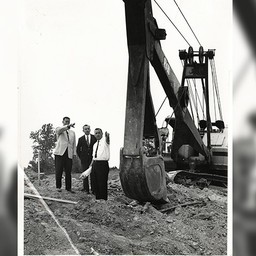

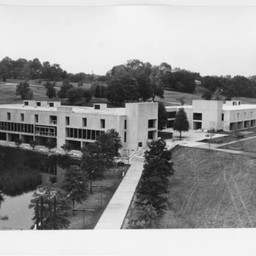
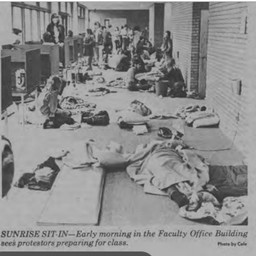
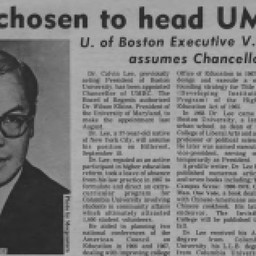
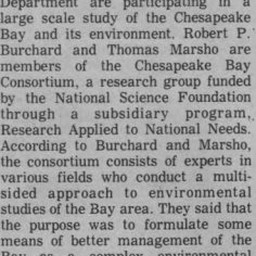
Terrific story, Robert!